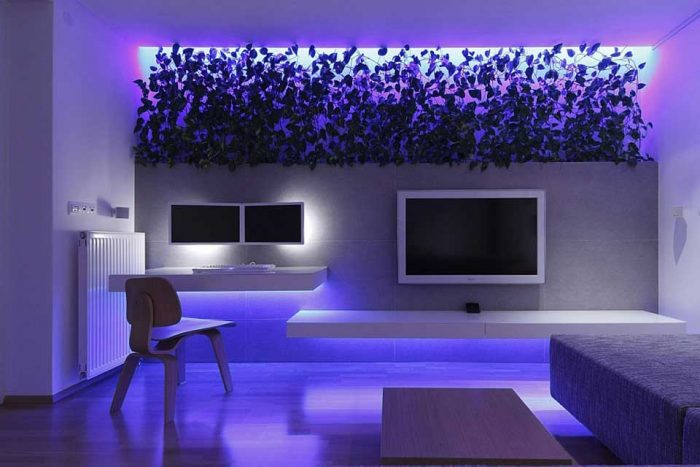If you are about to call the electricians in to install LED lighting throughout your home, you may want to hold off on that. While LED lighting does save on costs and reduces the drain on the earth’s resources, it is not actually good for us. According to Dr Alexander Wunsch an expert in photobiology, LED lighting contains only blue light, even if it appears to be more yellowish. This light is not good for us, especially if we are in it all the time.
Sunlight firelight, candle light and incandescent bulbs all contain near infrared light. This particular light cannot be seen or felt as heat, yet in penetrates our bodies by up to 5cm when we are exposed to it, even through clothing. This is actually a good thing, because it is this invisible light that restores and regenerates many of our cells, particularly our optic cells. In fact, without it we would eventually go blind and suffer from many diseases that our bodies can defend us from when they absorb the near-infrared light.
Blue light comes from LED lights, and can also be found in our mobile phones and in all those electronic devices the kids like to play games on, not to mention the screens of desk top computers. So even if you don’t have LED lights throughout the home, you will still be getting all the bad guys from blue light waves. What do they do to us? They are harmful to –
- Our biology
- Our mental health
- Retinal health
- Endocrine or hormonal health
Even though LED lights are said to have a ‘red’ wavelength it is not the near- infrared light that we need to keep us healthy. The blue light causes oxidative stress in the body’s cells that can lead to cancer or other diseases if it is not balanced with near-infrared light waves.
Blue light reduces the production of melatonin in the pineal gland. By using LED lights after sunset, there is much less regenerative near-infrared light in our eyes. Not only does this keep us awake, it means our retinas and other eye parts do not regenerate like they should. The result can be blindness as we age.
Since we lose the ability to do many other things as we age, we don’t also want to lose our sight. Imagine not being able to read, do crafts or even watch television, let alone see the scenery or whoever we happen to be talking to. No one wants to go blind at any age, old or young.
The risk of LED lights is reduced somewhat if there is plenty of sunlight streaming through the windows. You can change your lamps back to incandescent light too, but don’t get the frosted ones, as that covering prevents the near infrared light from shining and being absorbed by your body.

